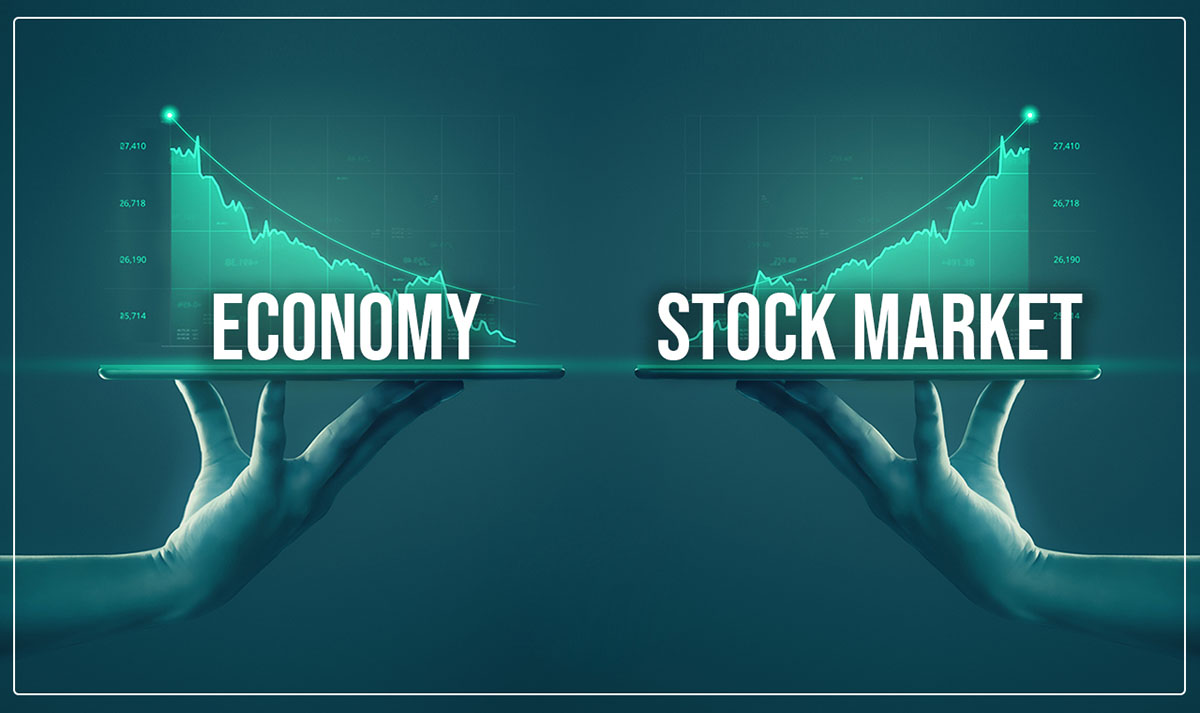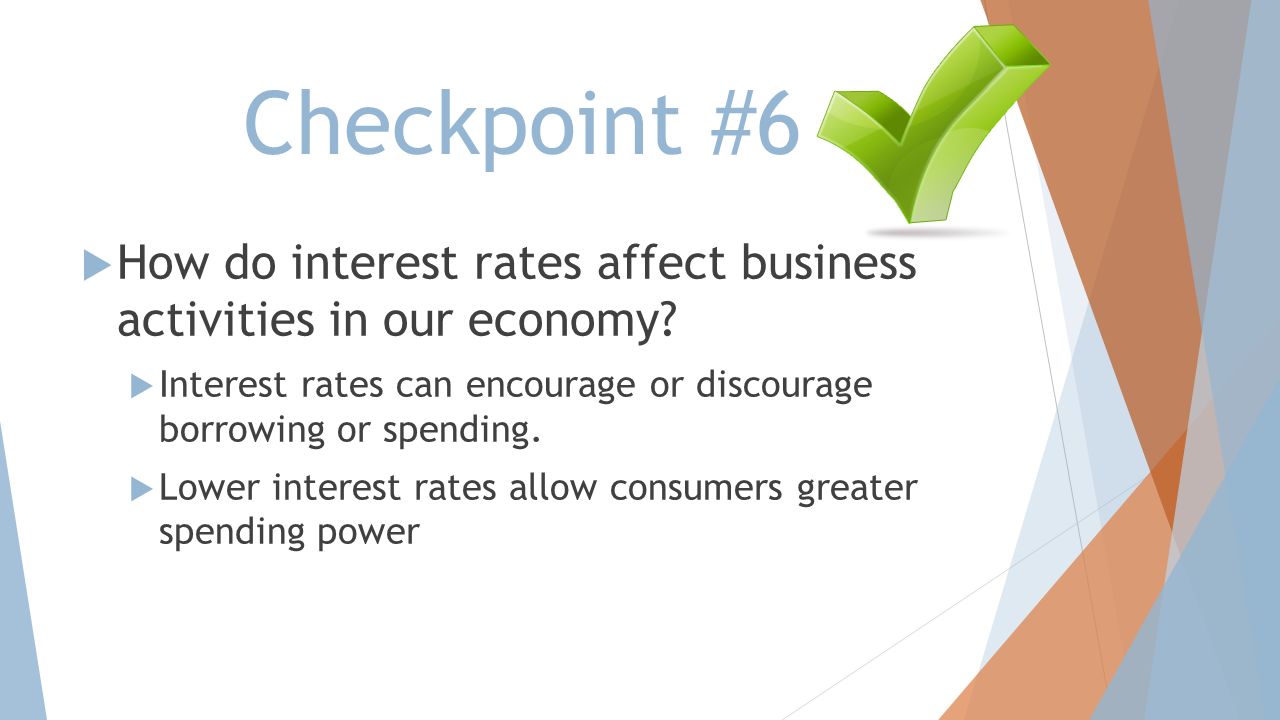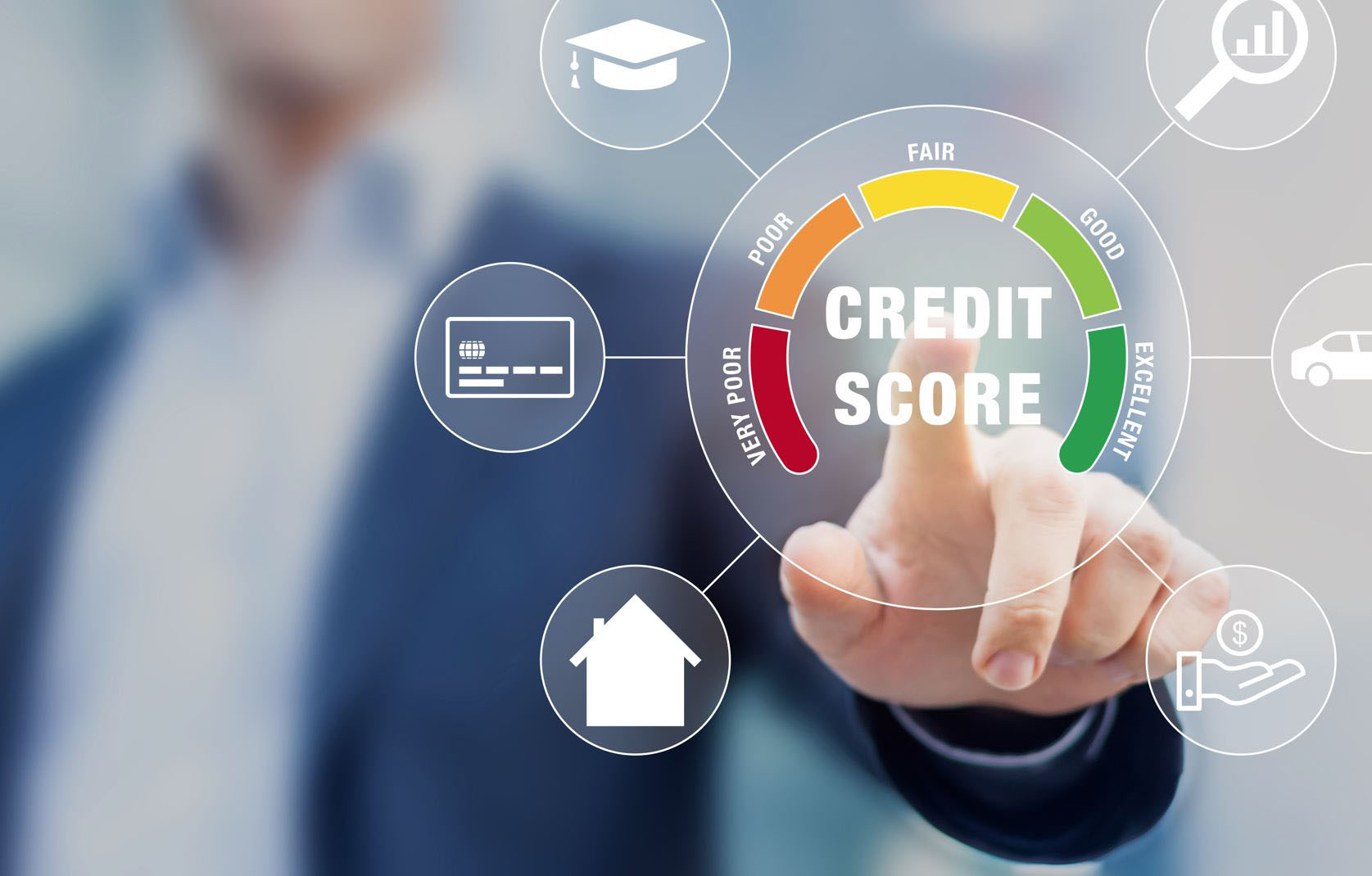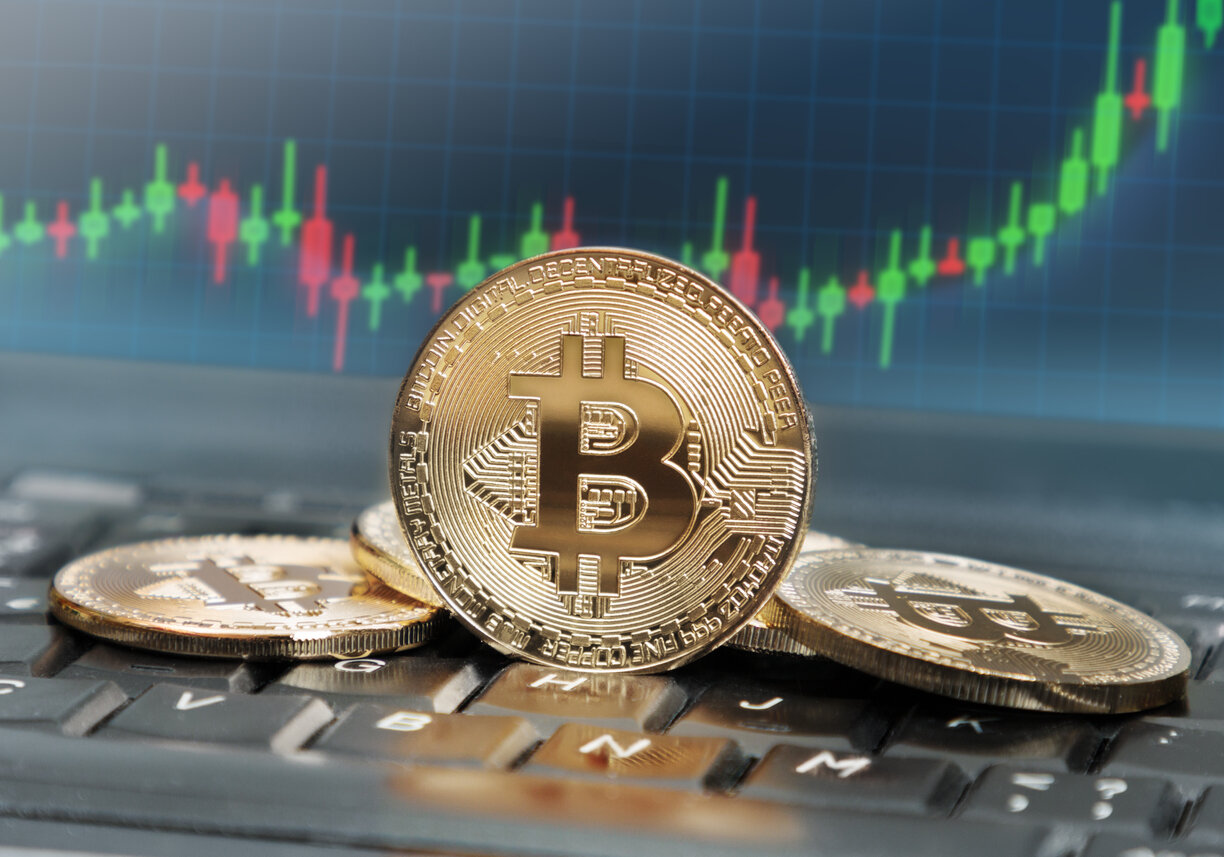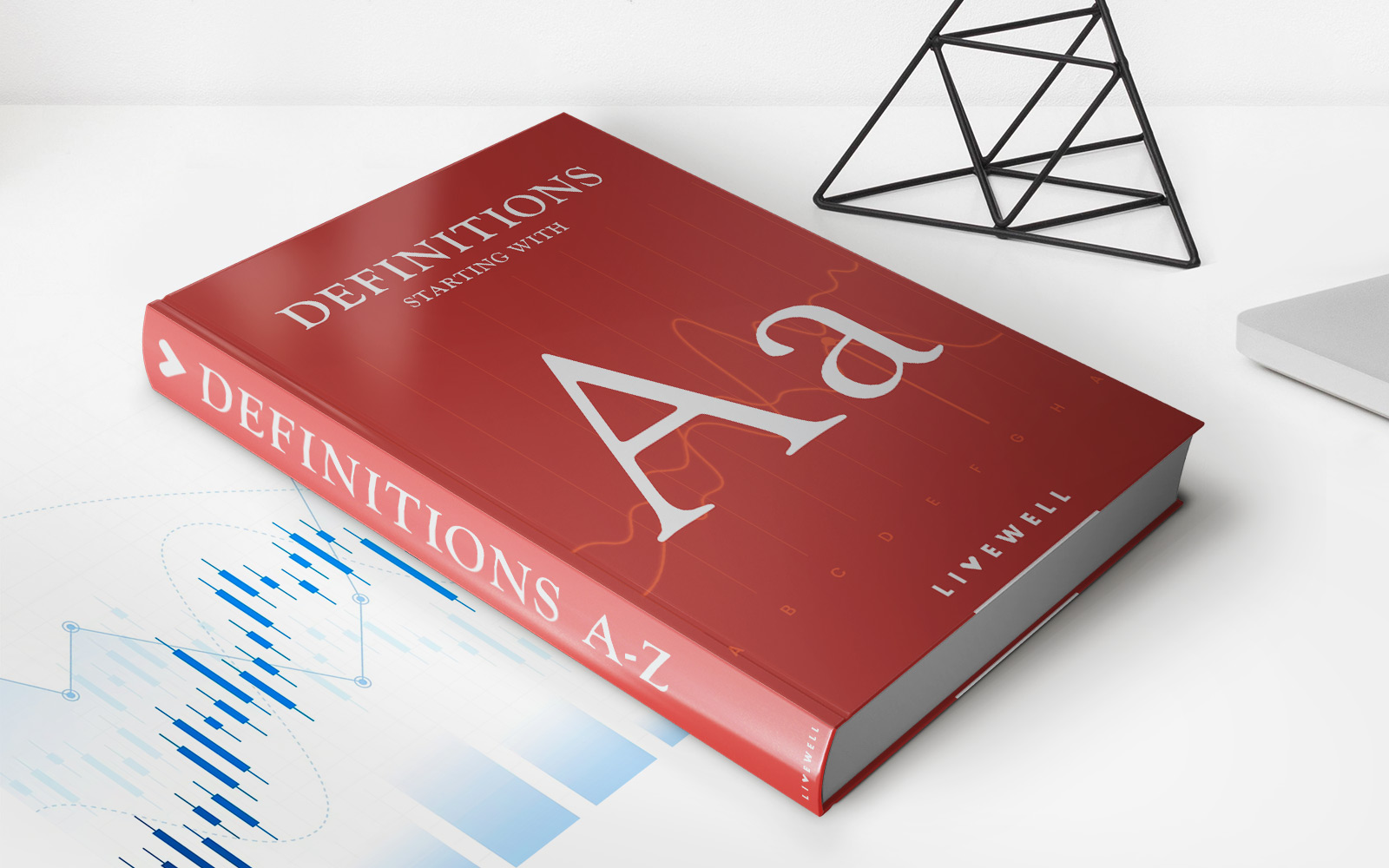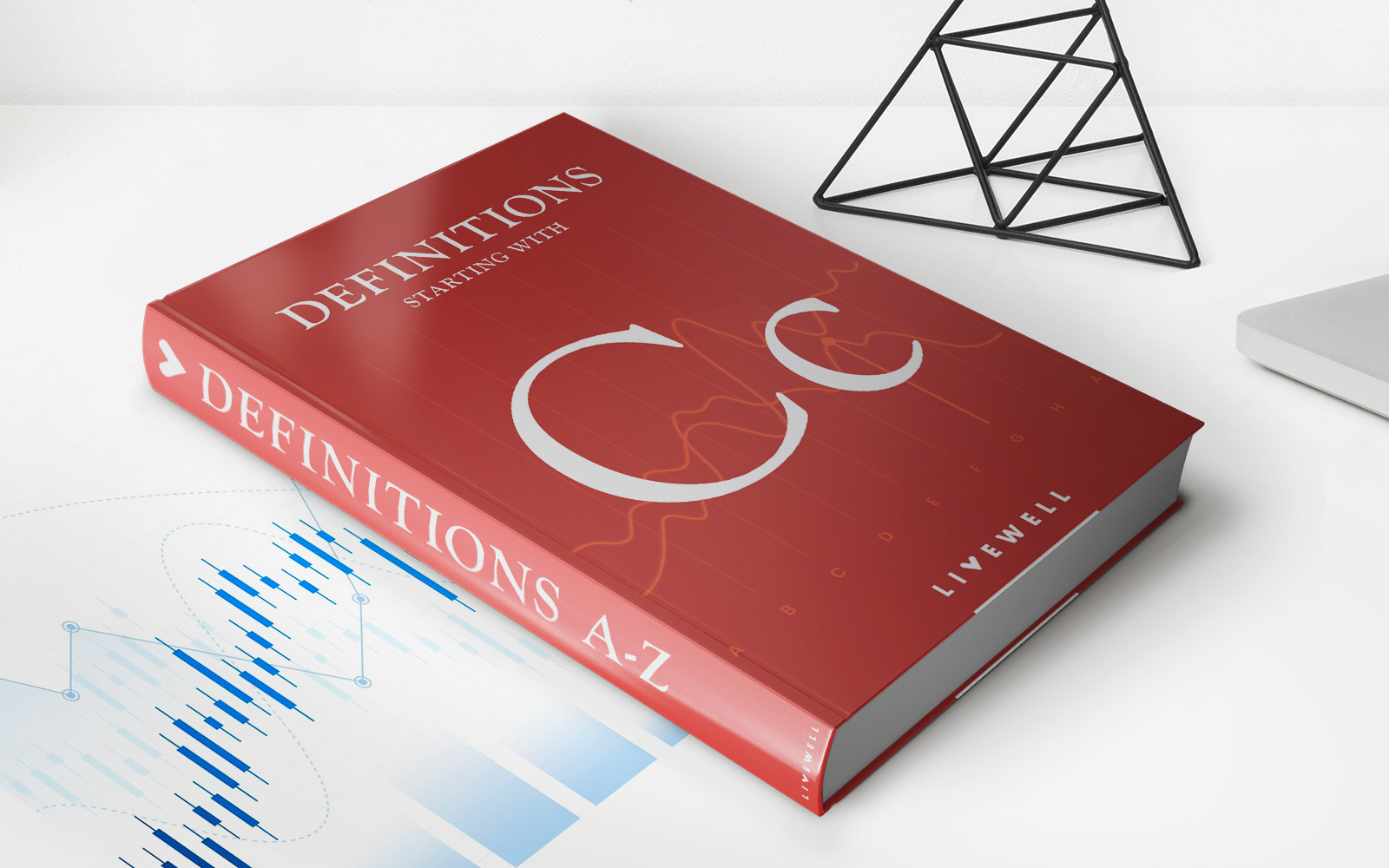Home>Finance>How Does The Use Of Credit Influence Businesses And The Economy?


Finance
How Does The Use Of Credit Influence Businesses And The Economy?
Published: January 11, 2024
Learn how the use of credit in finance affects businesses and the economy. Explore the impact of credit on financial growth, stability, and overall economic health.
(Many of the links in this article redirect to a specific reviewed product. Your purchase of these products through affiliate links helps to generate commission for LiveWell, at no extra cost. Learn more)
Table of Contents
Introduction
When it comes to the financial world, credit plays a pivotal role in shaping businesses and the overall economy. Whether it’s a small startup or a multinational corporation, the use of credit has a profound influence on how businesses operate and grow. Likewise, credit also has wide-ranging effects on the macroeconomic level, impacting the health and stability of the economy as a whole.
At its core, credit refers to the ability to borrow money or obtain goods and services with the expectation of paying for them later. It enables businesses to make investments, expand operations, and finance their day-to-day activities. From obtaining working capital to funding research and development, credit serves as the lifeblood of many enterprises. However, the impact of credit extends far beyond individual businesses and has a ripple effect on the broader economy.
In this article, we will explore the intricate relationship between credit, businesses, and the economy. We will delve into the role of credit in businesses, examining how it enables growth and drives innovation. Additionally, we will analyze the influence of credit on the economy, considering its positive and negative effects on key economic indicators such as employment, inflation, and overall stability.
By understanding the dynamics of credit, we can gain valuable insights into the workings of the financial world and how it shapes the business landscape. Let’s dive in and explore how the use of credit influences businesses and the overall economy.
Overview of Credit
Credit is a financial instrument that allows individuals, businesses, and governments to borrow money or obtain goods and services with the promise of repayment in the future. It is a fundamental component of the modern financial system, facilitating economic transactions and driving economic growth.
There are various types of credit available, including loans, credit cards, lines of credit, and trade credit. Loans are typically provided by financial institutions such as banks, while credit cards and lines of credit are offered by both banks and non-banking financial institutions. Trade credit, on the other hand, is a form of credit extended by suppliers to their buyers, allowing them to delay payment for goods or services.
The availability and terms of credit depend on factors such as the borrower’s creditworthiness, income, collateral, and the prevailing interest rates. Lenders assess these factors to determine the borrower’s ability to repay the credit and the risk associated with extending credit. A borrower with a strong credit history and stable income is more likely to obtain favorable credit terms, such as lower interest rates and higher credit limits.
When credit is extended, a debtor-creditor relationship is formed, in which the debtor borrows funds or obtains goods and services and agrees to repay the creditor according to the agreed-upon terms. These terms typically include the principal amount borrowed, the interest rate charged, and the repayment schedule. Some forms of credit, such as credit cards, provide a revolving line of credit, allowing borrowers to make minimum payments and carry a balance from month to month.
It’s important to note that credit is not inherently good or bad. How it is used and managed determines its impact on individuals, businesses, and the economy. Prudent and responsible use of credit can stimulate economic activity, fuel investment, and foster innovation. On the other hand, excessive or mismanaged credit can lead to financial instability, debt burdens, and economic downturns.
Now that we have an overview of credit, let’s explore its role in businesses and how it influences their operations and growth.
Role of Credit in Businesses
Credit plays a crucial role in the day-to-day operations and long-term growth of businesses. It provides the necessary financial resources for companies to invest, innovate, and sustain their operations. Here are some key ways in which credit contributes to the success of businesses:
- Funding: One of the primary roles of credit in businesses is to provide funding. Whether it’s a small startup or a well-established company, access to credit allows businesses to secure the capital they need to cover expenses, invest in equipment and technologies, and expand their operations. Loans, lines of credit, and trade credit enable businesses to bridge temporary cash flow gaps and finance their growth initiatives.
- Working Capital: Credit is essential for managing day-to-day business operations and meeting short-term financial obligations. By utilizing credit, businesses can maintain adequate working capital to cover expenses such as payroll, inventory purchases, and operational costs. This provides the necessary liquidity to ensure smooth operations and facilitates growth opportunities.
- Investment and Expansion: Credit allows businesses to make strategic investments that drive growth and expansion. Whether it’s opening new locations, acquiring assets, or investing in research and development, access to credit provides the financial means to pursue these opportunities. By leveraging credit effectively, businesses can position themselves competitively and tap into new markets.
- Innovation: Credit enables businesses to innovate and stay ahead in fast-paced industries. By securing loans or lines of credit, companies can invest in research and development, implement new technologies, and bring innovative products and services to market. This not only boosts their competitiveness but also contributes to overall industry growth and advancement.
- Emergency Funds: Credit serves as a safety net for businesses in times of unexpected expenses or emergencies. Having access to a credit line can provide the necessary funds to address unforeseen challenges such as equipment breakdowns, natural disasters, or economic downturns. It helps businesses navigate through difficult times and ensures continuity of operations.
Overall, the role of credit in businesses is multifaceted. It serves as a catalyst for growth, enables companies to seize opportunities, and provides a financial cushion in times of uncertainty. However, it’s important for businesses to manage credit responsibly and avoid excessive debt that may hinder their long-term sustainability.
Next, we will delve into the impact of credit on businesses and how it influences various aspects of their operations and decision-making processes.
Impact of Credit on Businesses
Credit has a significant impact on businesses, shaping their operations, growth strategies, and overall financial health. Here are key areas where credit influences businesses:
- Access to Capital: Credit provides businesses with the necessary access to capital for various purposes, such as starting a new business, expanding operations, or investing in new technologies. It allows businesses to obtain the funds they need without relying solely on their own capital or equity investors. This access to capital can be a crucial factor in determining the success or failure of a business.
- Business Relationships: Credit plays a critical role in building and maintaining relationships with suppliers, vendors, and other business partners. By demonstrating a strong credit history, businesses can negotiate favorable payment terms and build trust with their partners. Positive credit history can also lead to improved supplier relationships, ensuring a steady supply of goods and services on favorable terms.
- Financial Flexibility: Credit provides businesses with financial flexibility to manage cash flow fluctuations and unexpected expenses. It allows businesses to bridge temporary gaps in cash flow and meet financial obligations, such as payroll or purchasing inventory, even during slow periods. This flexibility is particularly important for businesses operating in cyclical industries or experiencing seasonality.
- Business Growth: Credit plays a crucial role in fueling business growth. With access to credit, businesses can make strategic investments, expand operations, and enter new markets. Whether it’s opening new locations, hiring more employees, or investing in marketing initiatives, credit can provide the necessary funds to support these growth strategies and propel businesses forward.
- Financial Management: Credit influences how businesses manage their finances. Whether it’s monitoring debt levels, making timely payments, or maintaining a good credit rating, businesses must be diligent in managing their credit obligations. Failure to do so can result in higher interest costs, damage to credit ratings, and limited access to future credit, which can hinder operations and growth opportunities.
- Risk Management: Credit allows businesses to manage and mitigate risks. By diversifying sources of credit and maintaining a healthy credit profile, businesses can reduce dependency on a single lender and minimize the impact of credit disruptions. Additionally, credit can act as a buffer during economic downturns, enabling businesses to navigate through challenging times and maintain stability.
The impact of credit on businesses is widespread and influences their financial stability, growth prospects, and ability to adapt to changing market conditions. However, it is essential for businesses to use credit responsibly and carefully manage their credit obligations to ensure long-term success.
Next, we will explore how the use of credit influences the broader economy and its effects on key economic indicators.
Influence of Credit on the Economy
The use of credit has a profound influence on the overall economy, shaping its growth, stability, and various economic indicators. Here are some key ways in which credit influences the economy:
- Investment and Economic Growth: Credit plays a vital role in spurring investment and driving economic growth. When businesses and individuals have access to credit, they can obtain the necessary funds to invest in new ventures, expand operations, and finance capital-intensive projects. This investment stimulates economic activity, creates jobs, and fosters innovation, contributing to the overall growth of the economy.
- Consumer Spending: Credit empowers consumers to make purchases, even when their immediate financial resources are limited. By providing access to credit, consumers can buy homes, cars, and other goods and services, fueling demand and driving economic activity. This consumer spending accounts for a significant portion of economic output and drives various sectors, such as retail, real estate, and automotive.
- Business Expansion: Credit enables businesses to expand their operations, hire more employees, and invest in productivity-enhancing technologies. This expansion creates employment opportunities and leads to higher consumer spending, further boosting economic growth. Additionally, when businesses expand, they contribute to the development of infrastructure, support local communities, and attract investments, benefiting the overall economy.
- Entrepreneurship and Innovation: Credit plays a critical role in fostering entrepreneurship and innovation. By providing access to capital, credit allows aspiring entrepreneurs to start businesses, develop new products, and introduce disruptive technologies. This entrepreneurial activity promotes competition, drives innovation, and enhances productivity, all of which contribute to the economic progress of a nation.
- Income Distribution: Credit can impact income distribution within an economy. Higher levels of credit availability can enable individuals with lower incomes to access financing for education, housing, or starting a business. This access to credit can help bridge the gap between the haves and have-nots by providing opportunities for upward social mobility and reducing income inequality.
- Macroprudential Stability: The overall level of credit in an economy plays a crucial role in its stability. Excessive credit creation can lead to asset price bubbles and financial instability, as witnessed during the global financial crisis of 2008. On the other hand, a lack of credit availability can hinder economic growth and limit investment opportunities. Striking the right balance and ensuring responsible credit creation is crucial for maintaining macroeconomic stability.
These are just a few examples of how the use of credit influences the broader economy. While credit can serve as an engine for economic growth, it must be managed carefully to avoid excessive debt burdens, financial instability, and economic downturns.
Next, we will examine the positive and negative effects of credit on the economy, highlighting their implications for individuals, businesses, and society as a whole.
Positive Effects of Credit on the Economy
The use of credit has several positive effects on the economy, contributing to its growth, stability, and overall well-being. Here are some key positive effects of credit on the economy:
- Economic Expansion: Credit plays a pivotal role in driving economic expansion. By providing businesses and individuals with access to capital, credit enables investments, technological advancements, and entrepreneurial activities that fuel economic growth. This expansion leads to job creation, increased productivity, and higher standards of living for individuals within the economy.
- Consumer Spending: Credit allows consumers to make purchases and invest in assets over time, rather than being limited by their immediate cash resources. This boosts consumer spending, which in turn stimulates demand and drives economic activity. Increased consumer spending contributes to the growth of various industries, such as retail, hospitality, and entertainment, enhancing overall economic performance.
- Entrepreneurship and Innovation: Credit empowers aspiring entrepreneurs to turn their ideas into viable business ventures. By providing access to capital and resources, credit enables entrepreneurs to take risks, innovate, and create value in the economy. This fosters competition, drives innovation, and leads to the development of new products, services, and technologies, all of which propel economic growth.
- Infrastructure Development: Credit plays a crucial role in financing infrastructure projects, such as roads, bridges, schools, and hospitals. These projects not only improve the quality of life for individuals but also stimulate economic activity by creating jobs and attracting investments. Infrastructure development enhances the overall competitiveness and productivity of an economy and sets the stage for long-term sustainable growth.
- Access to Education and Housing: Credit enables individuals to pursue higher education and homeownership, two critical aspects of personal and societal development. Student loans and mortgages provide individuals with the means to invest in their education and purchase homes, respectively. This access to credit promotes social mobility, improves income potential, and strengthens the foundations of the economy.
- Financial Inclusion: Credit expands access to financial services, promoting financial inclusion. It allows individuals and businesses that were previously excluded from mainstream financial systems to participate in economic activities, such as starting a business or making investments. This inclusion leads to more equitable economic growth and helps reduce poverty and income inequality within societies.
The positive effects of credit on the economy are undeniable, as it acts as a catalyst for growth, fosters innovation, and enables individuals and businesses to pursue opportunities that promote overall prosperity. However, it is crucial to manage credit responsibly and ensure that its use is sustainable to avoid the negative consequences that excessive debt can bring.
Next, we will explore the negative effects of credit on the economy, shedding light on the potential risks and challenges associated with its use.
Negative Effects of Credit on the Economy
While credit has numerous positive effects on the economy, it also carries potential risks and negative consequences when not managed properly. Here are some key negative effects of credit on the economy:
- Debt Burden: Excessive credit can lead to a high level of indebtedness for individuals, businesses, and even governments. When borrowers are unable to meet their debt obligations, it can lead to financial distress, defaults, and bankruptcies. A significant debt burden can hinder economic growth, as individuals and businesses focus on servicing their debts rather than investing in productive activities.
- Financial Instability: An imbalanced and unsustainable credit market can result in financial instability within the economy. Excessive lending can lead to asset bubbles, as seen in the housing market prior to the 2008 financial crisis. When these bubbles burst, it can trigger a chain reaction of financial distress, bank failures, and economic downturns. Financial stability relies on responsible credit practices and effective risk management.
- Inflationary Pressures: A surge in credit availability can fuel inflationary pressures within the economy. When there is an excessive expansion of credit without a corresponding increase in productive capacity, it can drive up prices of goods and services. Increased borrowing and spending power can lead to demand-pull inflation, eroding the purchasing power of consumers and potentially destabilizing the economy.
- Unequal Distribution of Wealth: The availability and access to credit can exacerbate income inequality within society. Those with higher incomes and better creditworthiness can access credit at lower interest rates, allowing them to accumulate wealth more easily. On the other hand, individuals with lower incomes or poor credit histories face higher borrowing costs and limited access to credit, perpetuating income disparities and social inequality.
- Overconsumption and Overspending: Credit can encourage overconsumption and overspending, leading individuals and businesses to accumulate unsustainable levels of debt. Easy access to credit can create an illusion of increased wealth and purchasing power, prompting individuals to spend beyond their means and businesses to overextend themselves. This behavior can lead to an artificial boost in economic activity but can also result in a severe economic downturn when the debt becomes unmanageable.
- Systemic Risk: The interconnectedness of the financial system means that problems in one sector can quickly spread across the economy. When there is excessive reliance on credit, a downturn or crisis in one sector, such as housing or banking, can have cascading effects on other sectors and institutions. This systemic risk can amplify the negative effects of credit, leading to financial contagion and a broader economic crisis.
It is important to strike a balance between the positive and negative effects of credit on the economy. Responsible lending practices, effective regulation, and prudent financial management are essential to mitigate the potential risks associated with credit and ensure its sustainable use.
Next, we will conclude by summarizing the key points discussed in this article and emphasizing the importance of understanding and managing credit in a responsible manner.
Conclusion
The use of credit holds immense significance in shaping businesses and the overall economy. It serves as a crucial source of funding, providing businesses with the capital needed to grow, innovate, and sustain operations. Credit also enables individuals to make significant investments, pursue education, and improve their quality of life.
However, credit is a double-edged sword. Its responsible use can stimulate economic growth, foster entrepreneurship, and enhance financial inclusion. Conversely, excessive or mismanaged credit can lead to debt burdens, financial instability, and economic downturns.
Understanding the role, impact, and influences of credit is essential for individuals, businesses, and policymakers. It guides decision-making processes, helps manage risks, and promotes sustainable economic growth.
In this article, we explored the overview of credit and its role in businesses. We discussed how credit enables businesses to obtain funding, manage working capital, and fuel growth. Additionally, we explored the influence of credit on the economy, highlighting its positive effects on economic expansion, innovation, and infrastructure development.
We also acknowledged the potential negative effects of credit, including debt burdens, financial instability, and unequal wealth distribution. It is crucial to manage credit responsibly, strike a balance between credit availability and risk management, and ensure equitable access to credit for all individuals and businesses.
By understanding the intricacies of credit and its impacts, we can navigate the dynamic financial world more effectively and contribute to sustainable economic development. It is essential to promote responsible credit practices, effective regulation, and financial literacy to ensure a healthy and stable economy for the benefit of all.
In conclusion, credit is a powerful tool that can drive economic growth and improve lives when used wisely. By harnessing its potential and managing its risks, we can maximize the benefits of credit while minimizing its negative consequences, fostering a stronger and more resilient economy for generations to come.
